The Palm Island project takes its inspiration from the unique geography of Chongqing where the Yangtze River and Jialing River converge into one.
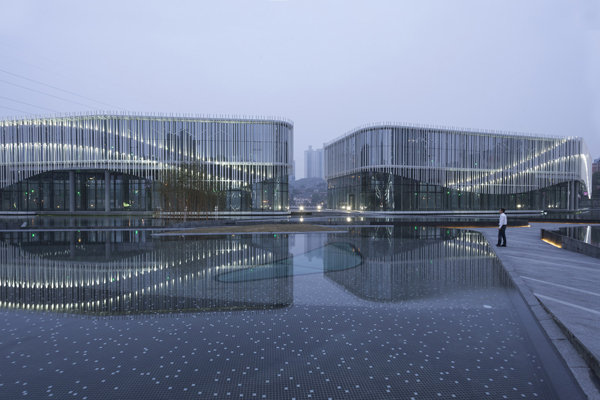
April 3rd, 2013
The Palm Island project is a series of five ‘floating islands’ situated in northern Chongqing, China on the banks of Palm Lake and Taiping Reservoir.
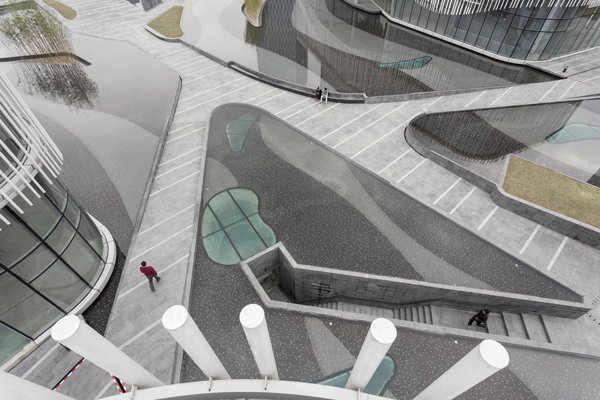
The design team from HASSELL, led by John Pauline, Design Principal of HASSELL Hong Kong, drew inspiration from the geography of Chongqing, which sits at the convergence of the mighty Yangtze River and Jialing River.
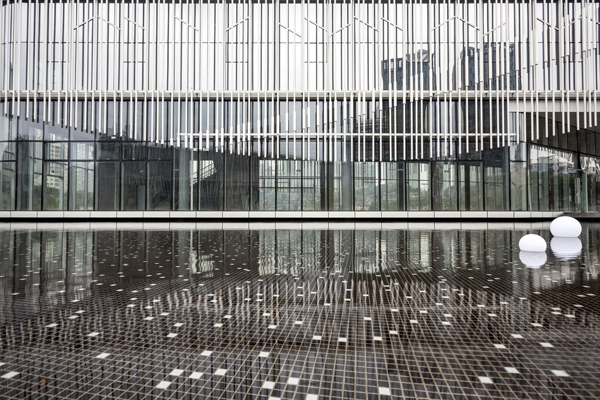
Housing five restaurants and a teahouse, the site “conceptually and visually connects the reservoir and the lake”, says Pauline.
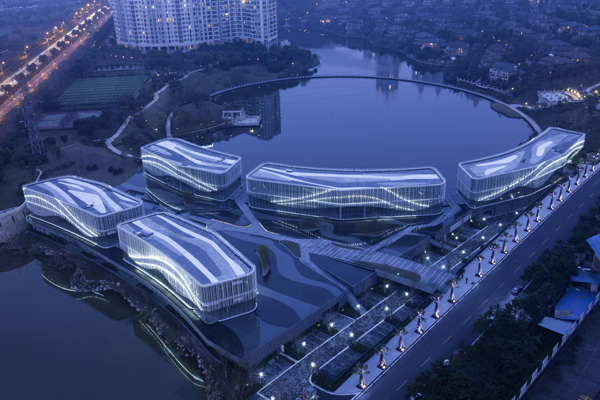
Patrons at each restaurant enjoy views of natural water vistas on one side and a private ‘water courtyard’ on the other, integrated visually through the creation of an infinity pool-style water platform – this gives the architectural impression that the buildings are floating on water when viewed from afar.
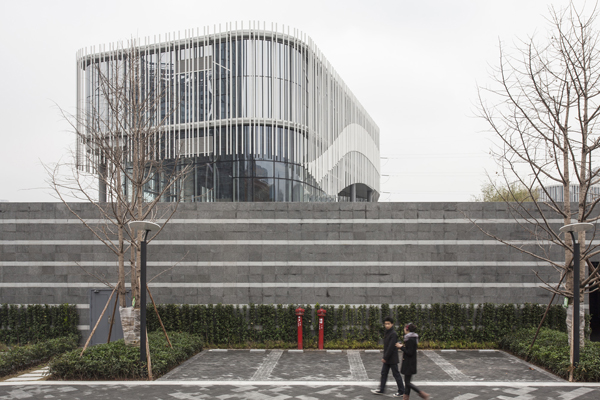
Pauline says it was a challenge to give each restaurant equally good views, but not only does the water platform achieve this, the kitchen and restrooms are also concealed under it.
Water is the most important material in this project, says Pauline, as it “conceptually connects the existing water bodies, and also becomes an effective ‘elevation’ by reflecting the buildings”.
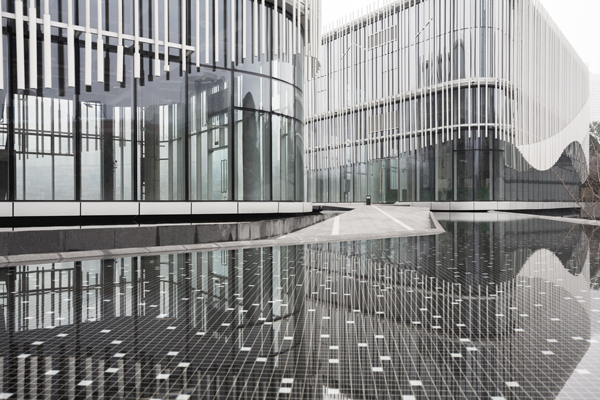
Pauline explains how the glass structure and external aluminium screens interact with the lake to give off a ‘musical quality’.

“The architecture is frozen in time, but there are several aspects that create sequential experiences. The curved forms of the building and glass give continuously changing perspectives and reflections, with the white aluminium screen also changing visual density depending on the viewer’s perspective.
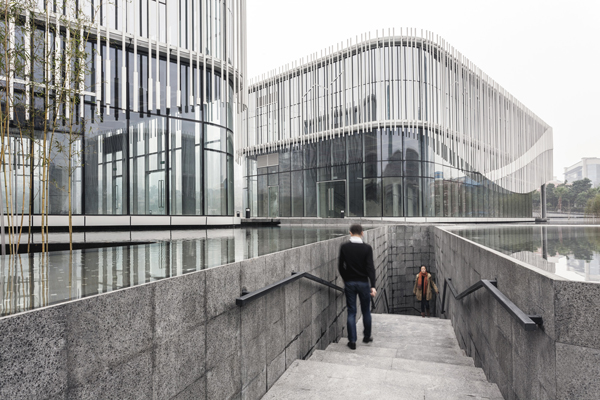
“The rigid, but fluid patterns of white rods will always be viewed through reflections from the water. The movement of the water will continuously ‘vibrate’ the straight lines. The reflections of the sunlit white rods are highlighted against the dark tiles under the water, and during the evening the effect will be further enhanced with the lighting on the rods.
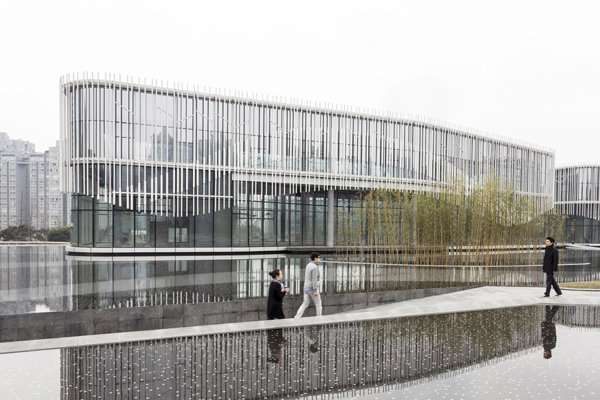
“Finally, the strong wave patterns that are formed in the elevation are a result of the combination of using thicker and thinner vertical rods. The elements are all straight, and not physically connected into a wave pattern, and so it is the viewer’s perception that ‘plays’ to experience the rhythm and musicality of the space.”
HASSELL
hassellstudio.com
INDESIGN is on instagram
Follow @indesignlive
A searchable and comprehensive guide for specifying leading products and their suppliers
Keep up to date with the latest and greatest from our industry BFF's!
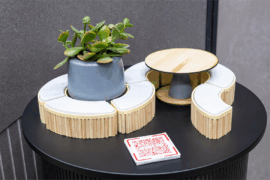
From the spark of an idea on the page to the launch of new pieces in a showroom is a journey every aspiring industrial and furnishing designer imagines making.
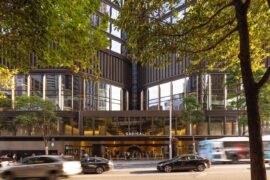
Rising above the new Sydney Metro Gadigal Station on Pitt Street, Investa’s Parkline Place is redefining the office property aesthetic.

London-based design duo Raw Edges have joined forces with Established & Sons and Tongue & Groove to introduce Wall to Wall – a hand-stained, “living collection” that transforms parquet flooring into a canvas of colour, pattern, and possibility.
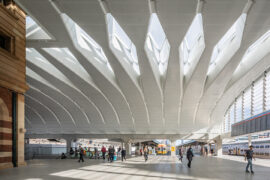
The Australian Institute of Architects has unveiled 43 projects representing the pinnacle of contemporary design, with winners addressing housing, climate and affordability crises through innovative solutions.

Community, Country and climate were centred at the 2025 Australian Institute of Landscape Architects (AILA) Awards in Lutruwita/Tasmania on 21st October.
The internet never sleeps! Here's the stuff you might have missed
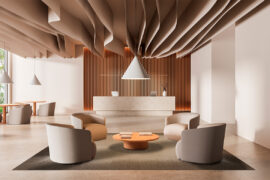
A stunning indoor space reveals artistry in every aspect, from outlook to underfoot.
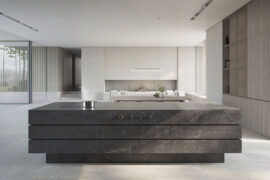
For those who appreciate form as much as function, Gaggenau’s latest induction innovation delivers sculpted precision and effortless flexibility, disappearing seamlessly into the surface when not in use.